The Impact of Kitchen Flooring on Home Resale Value
Kim sat at a table with samples scattered around her. She had swatches of luxury vinyl in various shades, a few strips of engineered hardwood, and a number of tiles mixed in. She looked a little lost as I sat down and said, “What can I help with?”
“I’m redoing my kitchen flooring. We’re remodeling the kitchen. I’ve been waiting to do this for years, and now that it’s here, I’m overwhelmed. I really want this, but my husband’s job might take us to a new city next year. So I’m not quite sure what to do.”
Does that sound familiar?
Life often brings you down a path to finally getting what you want. Only to throw a curveball and leave you wondering what’s next.
New kitchen flooring can be life-changing. It adds a lot to your decor. Since it’s the most popular room in the home, finalizing your selection is a big deal.
But what if moving is in your future?
Does it change your approach to installing new kitchen flooring?
Kitchen remodeling – don’t forget the flooring
According to the National Association of Realtors 2022 Remodeling Impact report, 67 percent of money spent on a kitchen upgrade can be recouped in a sale. Of course, this number can vary dramatically depending on what’s installed, the quality of the craftsmanship, and the time between remodeling and selling.
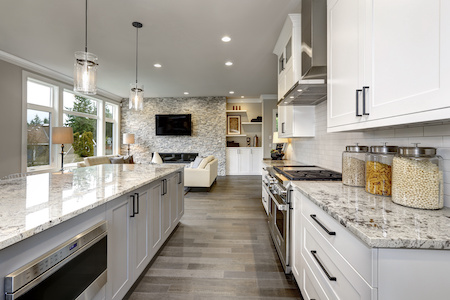 In general, there are two approaches to a remodel: basing it on your desires, or sticking with what buyers want.
In general, there are two approaches to a remodel: basing it on your desires, or sticking with what buyers want.
Can the two meet in the middle? Of course. As Kim is now finding out.
The kitchen is often considered the heart of the home, and homeowners want it to be visually appealing. Upgrading the flooring can completely transform the look of the kitchen. Different flooring materials, colors, and patterns can give the space a fresh and modern appearance.
Of course, personal preferences play a big role in kitchen remodeling decisions. Homeowners may choose a particular type of flooring that suits their lifestyle and taste, whether it’s hardwood for a warm, classic look or tile for a contemporary and industrial style.
If you go big and bold, you’ll narrow down who is attracted to your design. If you stay calm and middle-road, you’ll be more likely to appease a buyer who wants a clean palette to work from.
It’s up to you to decide where to land, and what to install.
Functionality is critical to your kitchen flooring selection
“So how do you see your kitchen? What matters most?” I could see the turmoil on Kim’s face.
She picked up a sample of luxury vinyl plank. “My gut is telling me to go with this. I’ve been reading about this and eyeing it for months. I love to cook and bake, and I’m in the kitchen every day of the week. I want something softer to stand on. I want something waterproof to take the abuse when my kids join me – they always create a mess. I don’t want to think about my flooring, but I want it to be beautiful, too. Is that too much to ask?”
“But …” I knew there was a “but” there, and I wanted her to say it.
“But I’m not sure of resale value. Will buyers like luxury vinyl? I always read hardwood is best.”
See, that’s where people get it wrong.
There are many different kinds of flooring available because not every flooring is suitable for every situation. It would be a very boring world if we all installed the same thing.
Functionality is a crucial consideration when selecting kitchen flooring because the kitchen is one of the most heavily used spaces in a home. It’s not just about making your kitchen look good; it’s about ensuring the flooring can withstand the unique demands of a cooking and dining area.
Kim said it herself.
The kitchen is prone to spills, splatters, and messes. Functionality comes into play here because the right flooring can be easy to clean and resistant to staining. Materials like tiles, vinyl, or laminate are popular choices for their ability to handle these common kitchen mishaps without staining or warping.
If you don’t sell your house for a year (or two or three) and you’re tough on the hardwood, it might look worn down, damaged, or even dated if you install it for resale alone, without considering how you use it.
Durability is also a big deal in the kitchen. This room takes a lot of abuse, from heavy foot traffic to dropped pots and pans. Choosing a flooring material that can stand up to these challenges is essential. Some materials like hardwood and certain types of tile are known for their durability, while others may require more frequent replacement or repair.
“Kim, what do YOU want?” I asked one more time.
Your gut knows what kitchen flooring to install
Some people like light wood, some like dark. Some put aesthetics first while others care more about functionality.
Remember when you searched for your current house? You walked into some and thought, “No way.” There were others where you thought, “I could see myself living here …”
And that’s the key.
We all have our own preferences, likes, interests, and tastes. We all have something that makes us go, “Ah, now I feel like I’m home.”
If you’re remodeling your kitchen, think quality. Do it to create an aesthetically pleasing kitchen, while staying focused on functionality.
Add in longevity. Low-quality products will wear out faster over time. Especially if you use your kitchen a lot, and tend to abuse it from time to time. That can be a big problem even in a few short years if you have a low-quality product.
In the end, Kim settled on what she knew she wanted in her heart. She pulled the piece of luxury vinyl right at the start.
If you’re in the market for new kitchen flooring, I bet it’s the same for you.
What’s in your heart? How can we help?
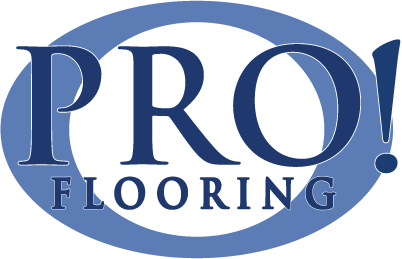
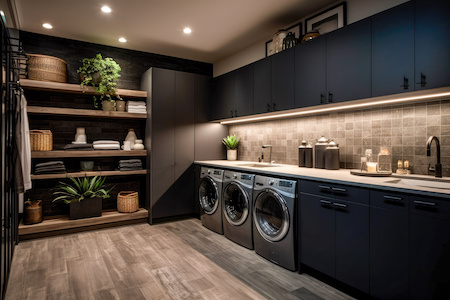 You can’t enter any home improvement store and not find LVT and ceramic tile. Both offer many benefits to a home, and can do wonders for your space.
You can’t enter any home improvement store and not find LVT and ceramic tile. Both offer many benefits to a home, and can do wonders for your space. Easy-to-clean floors not only maintain a tidy appearance but also reduce the risk of accidents. Liquids and debris can create slip hazards, and they’re more likely to linger on surfaces that are tough to clean. For instance, a carpet with deep pile might be cozy, but it can be a real headache to clean thoroughly.
Easy-to-clean floors not only maintain a tidy appearance but also reduce the risk of accidents. Liquids and debris can create slip hazards, and they’re more likely to linger on surfaces that are tough to clean. For instance, a carpet with deep pile might be cozy, but it can be a real headache to clean thoroughly.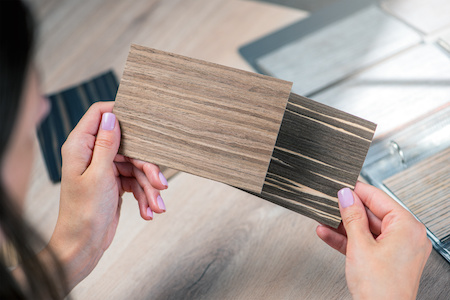 Basements are notorious for high humidity levels and occasional water intrusion. The concrete slab below your basement can release moisture over time, potentially damaging traditional hardwood flooring. Additionally, basements are susceptible to flooding, especially in regions with heavy rainfall or high water tables. Moisture can cause hardwood to warp, swell, or even rot, leading to costly repairs or replacements.
Basements are notorious for high humidity levels and occasional water intrusion. The concrete slab below your basement can release moisture over time, potentially damaging traditional hardwood flooring. Additionally, basements are susceptible to flooding, especially in regions with heavy rainfall or high water tables. Moisture can cause hardwood to warp, swell, or even rot, leading to costly repairs or replacements.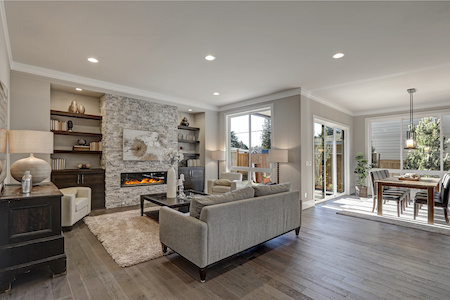 We also suggest starting a pinboard on Pinterest. Pin photos of rooms that appeal to you. You’ll start seeing a trend the more photos you pin. This can guide you in solidifying your decisions.
We also suggest starting a pinboard on Pinterest. Pin photos of rooms that appeal to you. You’ll start seeing a trend the more photos you pin. This can guide you in solidifying your decisions.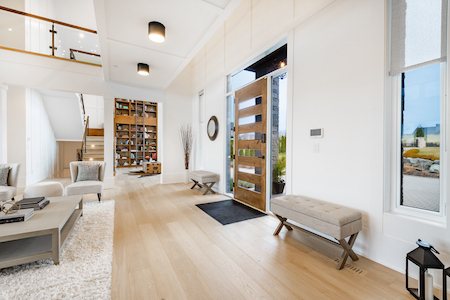 Solid hardwood flooring is a classic choice that never goes out of style. It exudes elegance and luxury, making it a top pick for homeowners looking to enhance their home’s value. Solid hardwood is a fantastic choice:
Solid hardwood flooring is a classic choice that never goes out of style. It exudes elegance and luxury, making it a top pick for homeowners looking to enhance their home’s value. Solid hardwood is a fantastic choice: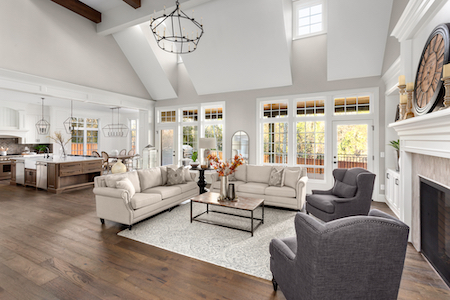 To better understand the difference, think of a room as a canvas.
To better understand the difference, think of a room as a canvas.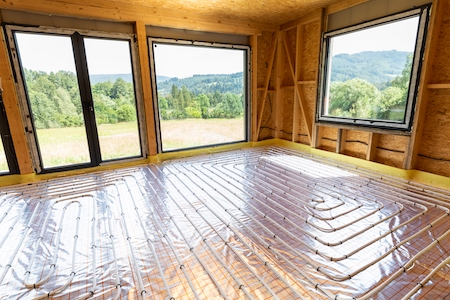 One of the most appealing aspects of radiant floor heating is its energy efficiency. Because the heat rises evenly, you can comfortably lower your thermostat a few degrees without sacrificing comfort. This adds up to potential energy savings over time.
One of the most appealing aspects of radiant floor heating is its energy efficiency. Because the heat rises evenly, you can comfortably lower your thermostat a few degrees without sacrificing comfort. This adds up to potential energy savings over time.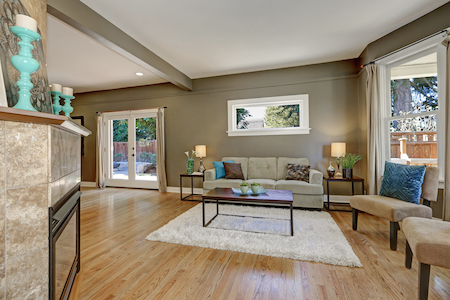 When it comes to giving a space that warm, inviting vibe, hardwood floors really top the list. There’s just something about them that screams timeless elegance and sophistication.
When it comes to giving a space that warm, inviting vibe, hardwood floors really top the list. There’s just something about them that screams timeless elegance and sophistication.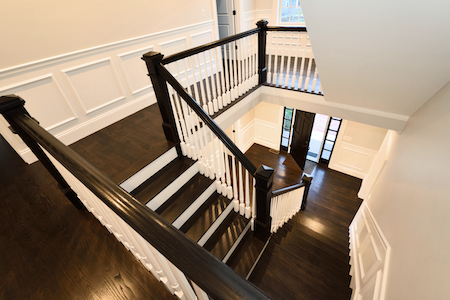 Welcome to your home’s grand entrance! Hallways and entryways are like the red carpet, setting the tone for your entire living space. But they’re also the high-traffic zones that take the brunt of dirt, moisture, and footfalls. That’s where the
Welcome to your home’s grand entrance! Hallways and entryways are like the red carpet, setting the tone for your entire living space. But they’re also the high-traffic zones that take the brunt of dirt, moisture, and footfalls. That’s where the